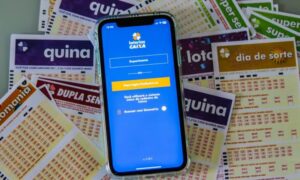PSN faces global outage affecting millions of players worldwide
The PlayStation Network (PSN), Sony’s online service, experienced a major global outage on the night of February 7, 2025, leaving millions of users without access to their games, accounts, and digital services. The issue was identified around 7 PM (Brasília time) when players started reporting difficulties logging into their profiles, launching digital games, and using online features. Sony acknowledged the problem and stated that it is working to restore the service, but there is no estimated timeframe for normalization yet. The impact was widespread, affecting PlayStation 5 and PlayStation 4 users, as well as limiting access to the PlayStation Store, preventing purchases and downloads. Additionally, services such as PlayStation Plus and cloud gaming were also affected, disrupting the experience of millions of subscribers who rely on connectivity to enjoy their purchased content.
Users reported that, besides being unable to access their purchased digital games, they also faced difficulties viewing their friends’ lists, sending messages, and syncing trophies. The failure was quickly noticed and generated a wave of complaints on social media and gaming forums. Various hashtags related to the PSN outage became trending topics on Twitter, with frustrated players questioning the platform’s stability.
BREAKING: According to reports PSN and all online game services on PlayStation are currently down with no word on when they will be back up. https://t.co/MRYkb7QsA5 pic.twitter.com/RXa1bmhf6X
— IGN (@IGN) February 8, 2025
Sony has not yet provided details about the cause of the failure but assured that its technical team is working to restore the service as quickly as possible. The company advises users to monitor PSN’s official status page for updates on the issue.
Impact on players and community reactions
The disruption of PlayStation Network’s online services directly impacted players worldwide, halting online matches, preventing new game purchases, and frustrating users who had planned to enjoy the service over the weekend. With millions of active subscribers every month, any network failure generates a significant volume of complaints and pressure on Sony, which must act quickly to minimize damage to its reputation.
With the inability to access purchased digital games, many users expressed dissatisfaction, especially those who own titles exclusively linked to their PSN accounts. Among the most affected were PlayStation Plus subscribers, who temporarily lost access to features such as online multiplayer, cloud saves, and the service’s game catalog.
The PSN outage also had repercussions in the gaming market, as the PlayStation Store became inaccessible for purchases, preventing players from acquiring new titles or taking advantage of ongoing promotions. Some users even reported difficulties launching physical games that require a connection to Sony’s servers for license validation.
History of PSN outages
Sony’s network has faced multiple outages over the years, some more severe and prolonged than others. One of the most notorious incidents occurred in 2011 when PSN was offline for 23 days due to a cyberattack, compromising the personal information of approximately 77 million accounts. At the time, the company had to overhaul its entire security infrastructure and offered free games as compensation to affected users.
In recent years, PSN has also recorded significant downtimes. In October 2024, the network suffered a global outage lasting about eight hours, affecting players in multiple regions. Additionally, in May of the same year, there was a partial issue that impacted certain services, such as trophy synchronization and account logins.
Possible causes of the global outage
Although Sony has not yet disclosed the exact cause of the failure, outages of this magnitude can be linked to different technical factors, such as:
- Server overload: A sudden increase in demand can overload PSN’s systems, causing temporary failures.
- Cyberattacks: Hackers frequently attempt to take down gaming networks, either to expose vulnerabilities or demand ransoms.
- Unexpected maintenance or updates: Changes to the network’s infrastructure can cause instabilities.
- Internal technical failure: Software or hardware issues on Sony’s servers may trigger unexpected outages.
Tips for users during the PSN outage
- Check PSN’s status page: Sony maintains an official platform to communicate failures and updates.
- Avoid multiple login attempts: Repeatedly trying to connect may lead to temporary account locks.
- Play offline titles: Many games still work without an internet connection, provided they were launched properly before the outage.
- Review security settings: Take this time to enable two-factor authentication and change passwords if necessary.
Curiosities about PlayStation Network
- PSN was launched in 2006 alongside the PlayStation 3 and has since expanded its service offerings.
- The network has surpassed 100 million monthly active users, making it one of the largest digital entertainment platforms.
- The PlayStation Store is one of the largest gaming marketplaces in the world, generating billions of dollars annually.
Summary of information about the global PSN failure
- The outage began on February 7, 2025, around 7 PM (Brasília time).
- Millions of players were affected worldwide, unable to access digital games and online features.
- Sony is aware of the issue and working to resolve the failure but has not provided an estimated recovery time.
- Users reported login problems, PlayStation Store inaccessibility, and PlayStation Plus functionality issues.
- PSN has experienced multiple failures over the years, with the most severe occurring in 2011 when it was offline for 23 days due to a hacker attack.
Timeline of recent PSN failures
- May 2024: Partial service outage affecting trophy synchronization and login.
- October 2024: Global downtime lasting about eight hours, affecting millions of users.
- February 2025: Current global outage with widespread impact and no estimated recovery time.
Key data about the current outage
- Affected services: Login, PlayStation Store, PlayStation Plus, digital games, and online functionalities.
- Estimated number of impacted users: Millions of players across various regions.
- Recovery status: Sony is investigating the failure and working on restoring services.
Measures Sony may take to prevent future outages
- Strengthening server infrastructure: Expanding capacity to handle high traffic volumes.
- Enhancing cybersecurity: Implementing more advanced systems to prevent attacks.
- More effective communication with users: Frequent updates to minimize impact and maintain transparency.
The importance of PSN in the PlayStation ecosystem
The PlayStation Network is a key component of Sony’s console ecosystem, providing a comprehensive experience with online gaming, digital purchases, and social interactions. Failures like this directly impact the user base and can affect the company’s reputation, reinforcing the need for continuous improvements to ensure stability and security.

The PlayStation Network (PSN), Sony’s online service, experienced a major global outage on the night of February 7, 2025, leaving millions of users without access to their games, accounts, and digital services. The issue was identified around 7 PM (Brasília time) when players started reporting difficulties logging into their profiles, launching digital games, and using online features. Sony acknowledged the problem and stated that it is working to restore the service, but there is no estimated timeframe for normalization yet. The impact was widespread, affecting PlayStation 5 and PlayStation 4 users, as well as limiting access to the PlayStation Store, preventing purchases and downloads. Additionally, services such as PlayStation Plus and cloud gaming were also affected, disrupting the experience of millions of subscribers who rely on connectivity to enjoy their purchased content.
Users reported that, besides being unable to access their purchased digital games, they also faced difficulties viewing their friends’ lists, sending messages, and syncing trophies. The failure was quickly noticed and generated a wave of complaints on social media and gaming forums. Various hashtags related to the PSN outage became trending topics on Twitter, with frustrated players questioning the platform’s stability.
BREAKING: According to reports PSN and all online game services on PlayStation are currently down with no word on when they will be back up. https://t.co/MRYkb7QsA5 pic.twitter.com/RXa1bmhf6X
— IGN (@IGN) February 8, 2025
Sony has not yet provided details about the cause of the failure but assured that its technical team is working to restore the service as quickly as possible. The company advises users to monitor PSN’s official status page for updates on the issue.
Impact on players and community reactions
The disruption of PlayStation Network’s online services directly impacted players worldwide, halting online matches, preventing new game purchases, and frustrating users who had planned to enjoy the service over the weekend. With millions of active subscribers every month, any network failure generates a significant volume of complaints and pressure on Sony, which must act quickly to minimize damage to its reputation.
With the inability to access purchased digital games, many users expressed dissatisfaction, especially those who own titles exclusively linked to their PSN accounts. Among the most affected were PlayStation Plus subscribers, who temporarily lost access to features such as online multiplayer, cloud saves, and the service’s game catalog.
The PSN outage also had repercussions in the gaming market, as the PlayStation Store became inaccessible for purchases, preventing players from acquiring new titles or taking advantage of ongoing promotions. Some users even reported difficulties launching physical games that require a connection to Sony’s servers for license validation.
History of PSN outages
Sony’s network has faced multiple outages over the years, some more severe and prolonged than others. One of the most notorious incidents occurred in 2011 when PSN was offline for 23 days due to a cyberattack, compromising the personal information of approximately 77 million accounts. At the time, the company had to overhaul its entire security infrastructure and offered free games as compensation to affected users.
In recent years, PSN has also recorded significant downtimes. In October 2024, the network suffered a global outage lasting about eight hours, affecting players in multiple regions. Additionally, in May of the same year, there was a partial issue that impacted certain services, such as trophy synchronization and account logins.
Possible causes of the global outage
Although Sony has not yet disclosed the exact cause of the failure, outages of this magnitude can be linked to different technical factors, such as:
- Server overload: A sudden increase in demand can overload PSN’s systems, causing temporary failures.
- Cyberattacks: Hackers frequently attempt to take down gaming networks, either to expose vulnerabilities or demand ransoms.
- Unexpected maintenance or updates: Changes to the network’s infrastructure can cause instabilities.
- Internal technical failure: Software or hardware issues on Sony’s servers may trigger unexpected outages.
Tips for users during the PSN outage
- Check PSN’s status page: Sony maintains an official platform to communicate failures and updates.
- Avoid multiple login attempts: Repeatedly trying to connect may lead to temporary account locks.
- Play offline titles: Many games still work without an internet connection, provided they were launched properly before the outage.
- Review security settings: Take this time to enable two-factor authentication and change passwords if necessary.
Curiosities about PlayStation Network
- PSN was launched in 2006 alongside the PlayStation 3 and has since expanded its service offerings.
- The network has surpassed 100 million monthly active users, making it one of the largest digital entertainment platforms.
- The PlayStation Store is one of the largest gaming marketplaces in the world, generating billions of dollars annually.
Summary of information about the global PSN failure
- The outage began on February 7, 2025, around 7 PM (Brasília time).
- Millions of players were affected worldwide, unable to access digital games and online features.
- Sony is aware of the issue and working to resolve the failure but has not provided an estimated recovery time.
- Users reported login problems, PlayStation Store inaccessibility, and PlayStation Plus functionality issues.
- PSN has experienced multiple failures over the years, with the most severe occurring in 2011 when it was offline for 23 days due to a hacker attack.
Timeline of recent PSN failures
- May 2024: Partial service outage affecting trophy synchronization and login.
- October 2024: Global downtime lasting about eight hours, affecting millions of users.
- February 2025: Current global outage with widespread impact and no estimated recovery time.
Key data about the current outage
- Affected services: Login, PlayStation Store, PlayStation Plus, digital games, and online functionalities.
- Estimated number of impacted users: Millions of players across various regions.
- Recovery status: Sony is investigating the failure and working on restoring services.
Measures Sony may take to prevent future outages
- Strengthening server infrastructure: Expanding capacity to handle high traffic volumes.
- Enhancing cybersecurity: Implementing more advanced systems to prevent attacks.
- More effective communication with users: Frequent updates to minimize impact and maintain transparency.
The importance of PSN in the PlayStation ecosystem
The PlayStation Network is a key component of Sony’s console ecosystem, providing a comprehensive experience with online gaming, digital purchases, and social interactions. Failures like this directly impact the user base and can affect the company’s reputation, reinforcing the need for continuous improvements to ensure stability and security.











Post Comment